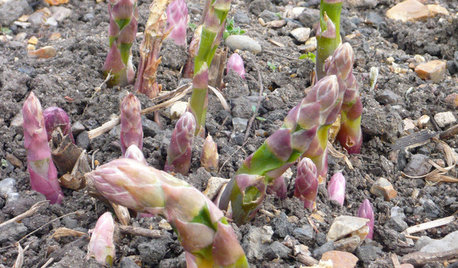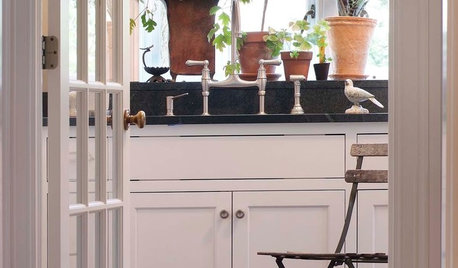Need help planning an asparagus bed
digitaldan1
13 years ago
Related Stories

COOL-SEASON CROPSCool-Season Vegetables: How to Grow Asparagus
Patience pays off with this harbinger of spring that lasts for decades in the garden
Full Story
REMODELING GUIDESKey Measurements for a Dream Bedroom
Learn the dimensions that will help your bed, nightstands and other furnishings fit neatly and comfortably in the space
Full Story
SMALL SPACESDownsizing Help: Where to Put Your Overnight Guests
Lack of space needn’t mean lack of visitors, thanks to sleep sofas, trundle beds and imaginative sleeping options
Full Story
STAIRWAYSHelp Your Stair Landing Take Off
Whether for storage, art, plants or whatever else strikes your fancy, your stair landing can serve your home in a thoughtful way
Full Story
LANDSCAPE DESIGNHow to Help Your Home Fit Into the Landscape
Use color, texture and shape to create a smooth transition from home to garden
Full Story
Storage Help for Small Bedrooms: Beautiful Built-ins
Squeezed for space? Consider built-in cabinets, shelves and niches that hold all you need and look great too
Full Story
LIFEDecluttering — How to Get the Help You Need
Don't worry if you can't shed stuff and organize alone; help is at your disposal
Full Story
HOUSEKEEPINGThree More Magic Words to Help the Housekeeping Get Done
As a follow-up to "How about now?" these three words can help you check more chores off your list
Full Story
SMALL SPACESDownsizing Help: Storage Solutions for Small Spaces
Look under, over and inside to find places for everything you need to keep
Full Story
HEALTHY HOMEDecorate With Intention: Let Your House Help You De-Stress
Break free of automatic TV time and learn how to really unwind and recharge with these easy ideas that don't cost a dime
Full Story





toxcrusadr
yiorges-z5il
Related Professionals
Surprise Landscape Architects & Landscape Designers · Windham Landscape Architects & Landscape Designers · Bellflower Landscape Architects & Landscape Designers · Harrison Landscape Architects & Landscape Designers · Lakeland Landscape Contractors · Barrington Landscape Contractors · Davis Landscape Contractors · Gallatin Landscape Contractors · Hannibal Landscape Contractors · La Verne Landscape Contractors · Lynn Landscape Contractors · Streamwood Landscape Contractors · Tuscaloosa Landscape Contractors · Woodburn Landscape Contractors · Baltimore Decks, Patios & Outdoor Enclosuresdigitaldan1Original Author
digitaldan1Original Author
jollyrd
chinamigarden
digitaldan1Original Author
plaidbird
foragingfool
nutsaboutflowers
sandhill_farms
jolj
jonhughes
leira
jolj
jonhughes